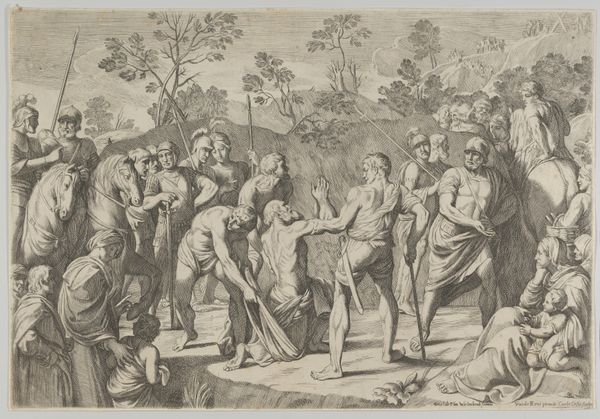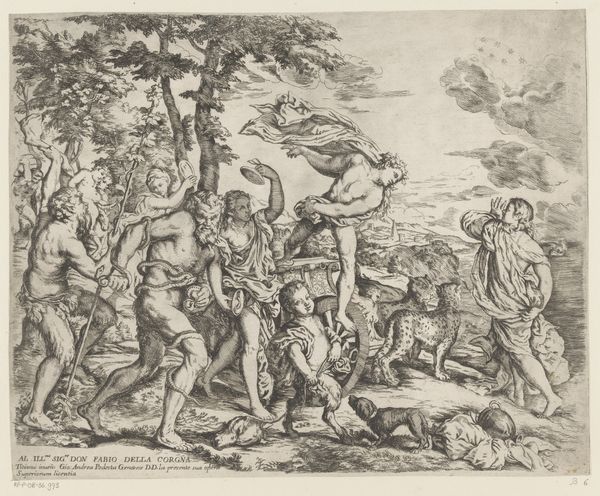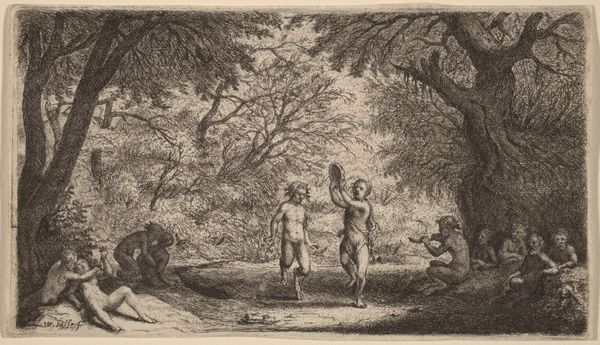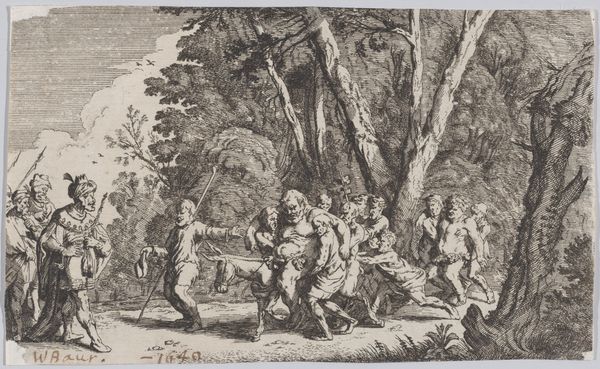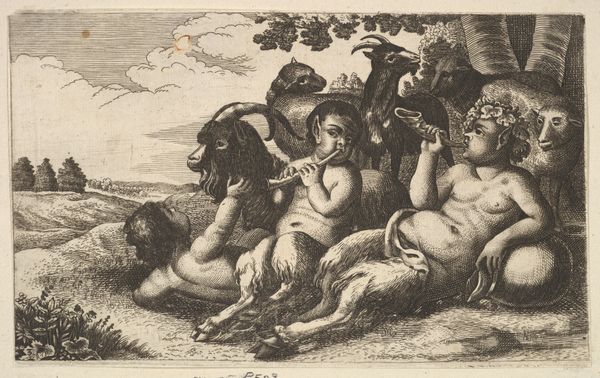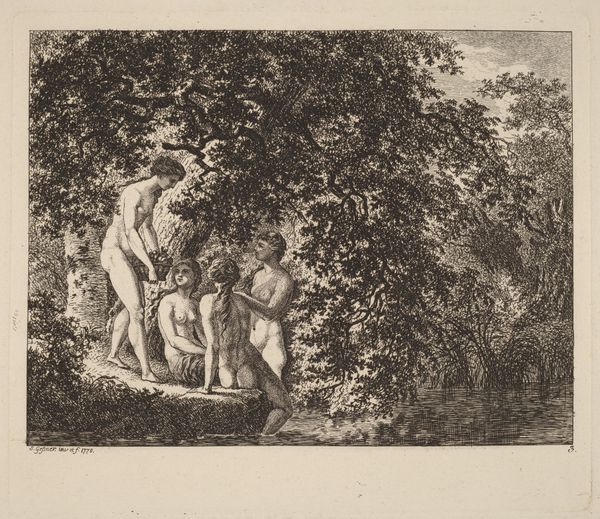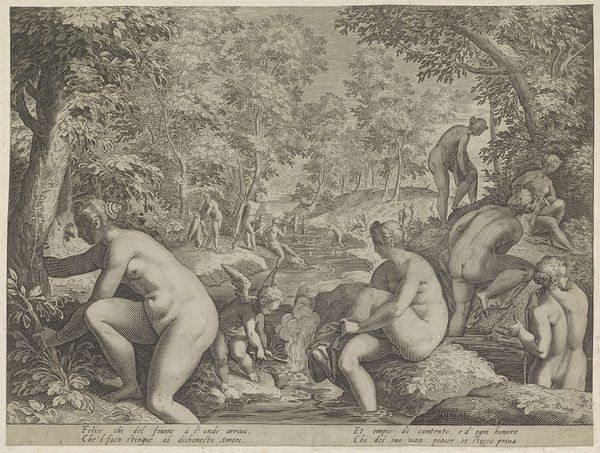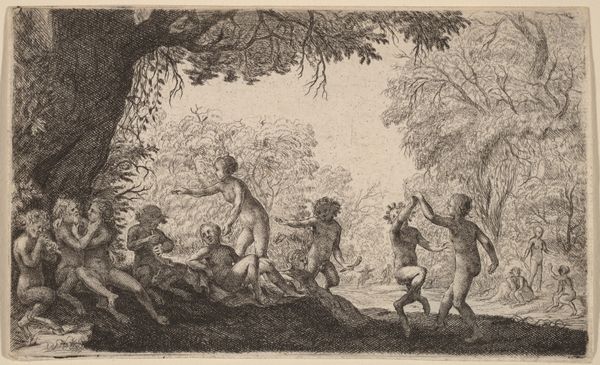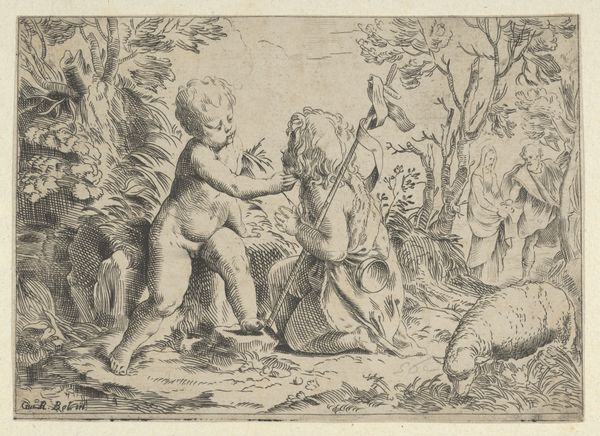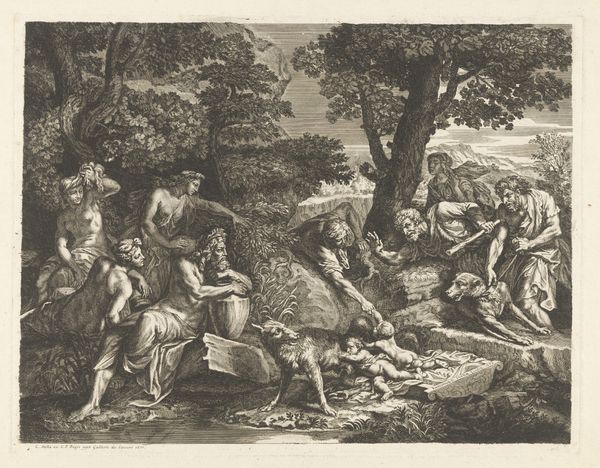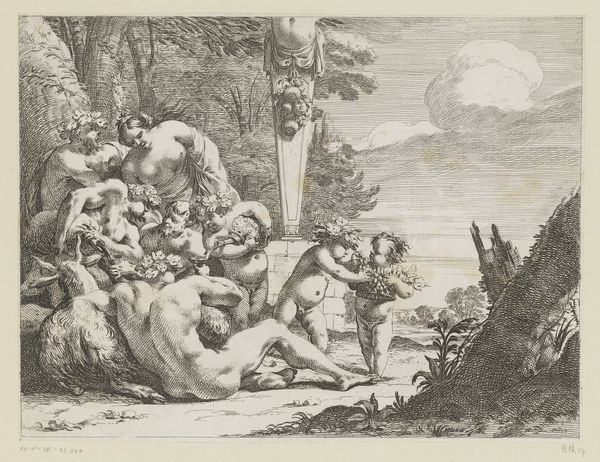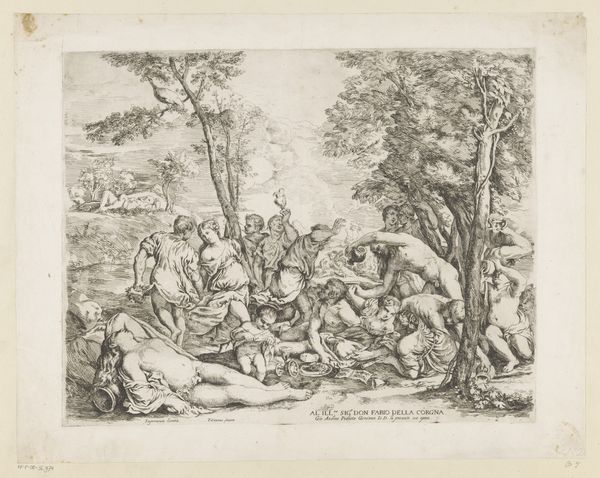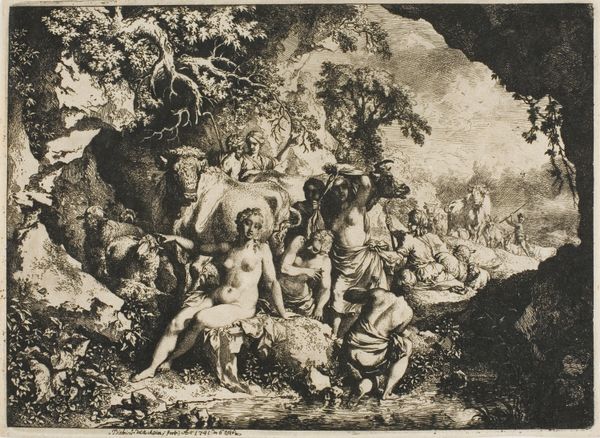
Four Dancing Children (Bacchantes) and Two Making Music 1640 - 1650
0:00
0:00
drawing, print, engraving
#
drawing
#
baroque
# print
#
landscape
#
figuration
#
11_renaissance
#
genre-painting
#
engraving
Dimensions: Sheet: 9 1/4 × 11 5/8 in. (23.5 × 29.5 cm)
Copyright: Public Domain
Erasmus Quellinus made this pen and brown ink drawing called, 'Four Dancing Children (Bacchantes) and Two Making Music,' in the 17th century. During this period, the Dutch Golden Age, artists were actively imagining and depicting the world of the ancient classical past. Here, Quellinus presents us with children embodying the Bacchantes, followers of Bacchus, the god of wine, fertility, and theatre. These Bacchantes appear to be in the throes of ecstatic revelry, embracing a freedom that perhaps adults of the time could only dream of. The themes of classical mythology allowed artists to explore the ideas of freedom, joy, and uninhibited expression, offering an alternative to the more rigid social norms. Imagine the feeling of liberation Quellinus might have been channeling, or perhaps critiquing, through his depiction of children abandoning themselves to the intoxicating rhythm of life. How does this image challenge or affirm societal expectations around childhood, gender, and pleasure?
Comments
No comments
Be the first to comment and join the conversation on the ultimate creative platform.
